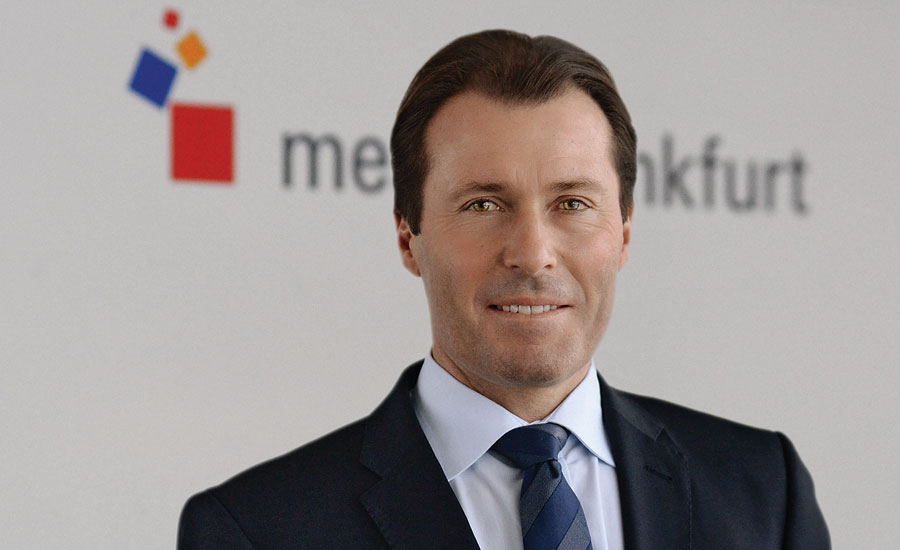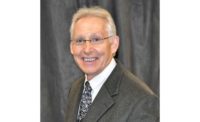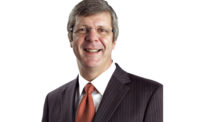PME interviewed Wolfgang Marzin, president and CEO of German exhibition company Messe Frankfurt GmbH, April 24 in Chicago during his company’s Automechanika trade show. Messe Frankfurt’s ISH: The Bathroom Experience, Building Services, Energy, Air Conditioning Technology and Renewal Energies trade show occurred a month earlier in Germany.
Marzin has worked in his current positions since 2010. Previously he held the position of president of Messe Düsseldorf North America, the Chicago-based arm of another German exhibition company.
PM: What excited you most about ISH 2015 compared with ISH 2011 and ISH 2013?
WM: It’s the amazing development of the industry from various points. If you look at the industry 20 years ago, we used oil and gas in our homes. Now we have solar energy, for example, and all our heating and air conditioning is driven by energy efficiency. In Europe, 40% of energy consumption goes into buildings, 40% into automobile traffic and 20% into industrial production. All the industries that exhibit at ISH are showing what energy efficiencies they bring. ISH is a leading show for this.
If you look at ISH as the world’s leading show for air conditioning, sanitary and heating, it’s a revolution every second year it’s held. This is what amazes me the most. The show is growing in all ways: exhibitors, attendees and the quality of the visitors in terms of their position in the industry. These are decision-makers who are important in their companies.
PM: Do you recall any particularly noteworthy highlights of ISH 2015?
WM: With 2,500 exhibitors and all the world in one spot in Frankfurt, there was no reason for me to sit in my office, so I walked the show all five days. In Hall 8, not only the energy efficiency but the design of the heating equipment fascinated me. The heating equipment in the home was always hidden in the basement or behind the wall. Now you can put your heating appliance next to your TV set.
Then, on the sanitary side, you see the development of the perception of the bathroom. It used to be that I’d very quickly shower or shave, and then I’d try to get out of the bathroom as soon as possible. Now it’s become more a part of the whole living area. There’s more furniture, and with all the modern designs, why not have the bathtub in the middle of your living room?
PM: Do you see water-quality products as a growing segment at ISH now and in the future?
WM: ISH reflects the big issues of the world: quality water, feed the planet and energy for everybody by bringing down energy consumption. Water quality and water consumption are among the big topics in the world today and is a familiar topic to many European countries. I know that I have been drinking from the faucet since I was a child.
PM: What brings so many young people in the plumbing and heating trades to ISH Frankfurt?
WM: More and more young people realize they do not have to go to a university right away. Roughly only 50% of German young people go to a university and the other 50% go directly into their profession. These young people decide after secondary school to not go to a university to study for a long time. Instead, they become plumbers, electricians, auto mechanics or so on.
We have a system now that if you have finished your apprenticeship training, you can still go to a university to study when you are 22 or 23. This has become more of an advantage for young people when they go to job interviews because they already have experience in the work force.
These young tradespeople are already in plumbing and they’re interested in attending. It is either an incentive from their company to attend, or it is viewed as a training opportunity where the company owner says, “Let’s go together to see the show.”
PM: What is the public perception in Europe of the plumbing and heating trades as a career choice for young people?
WM: The perception is good because everybody needs them and they cannot be replaced. The products and instruments they install have become more sophisticated. The typical man in a German household would not install his own bathtub. Forget it! We would always call a plumber if we had a broken pipe or sewage pipe and not try to fix it ourselves. These guys are like heroes. More and more, I think that’s the perception. You see plumbers becoming very wealthy people when they decide to open their own business.
PM: Are you seeing an increase in female members of the plumbing and heating trades attending ISH?
WM: It’s a good question, but we leave this up to the industry associations we work with to determine their own membership. However, it is still a predominantly male industry. More women are entering into the engineering side, maybe up from 10% to 15%. As a trade show organizer, we see potential for more female decision-makers to attend.
PM: Your show seems to embrace an international flavor more than many U.S. shows do. Why is that?
WM: We need to think internationally. The U.S. is a much bigger market. The German market would not be sufficient to host a show of this kind. From the beginning, all the leading shows in Germany needed to pull the whole world or Europe together. I am seeing more internationalization in U.S. shows, which I think is a good thing.
PM: Many U.S. trade shows are produced annually. What makes the alternate-year format work so well for ISH Frankfurt?
WM: For at least two reasons: Holding trade shows every other year allows us to put a substantial investment into that show. Also, the innovation cycle in sanitary, heating and cooling is more of a two-year cycle. Since companies all look forward to launching their products at the world’s leading show, which is ISH, it has to be every other year. It would just be too big to do every year.
There is a structure in the even-number years when we see local shows for German plumbers or regional plumbers who are not able to come to ISH because of time constraints or other reasons. The plumbing associations have their shows in the north, east and south of Germany, so it is an agreement with the industry and the plumbers to have the regional shows in the even years.
PM: Messe Frankfurt produced a plumbing trade show for the North American market. What happened with it?
WM: The U.S. is a very competitive market. Germany is different from the U.S. because the German plumber installs sanitary as well as heating and air conditioning equipment. This is a unique combination in central Europe, Germany, Switzerland, Austria and northern Italy. It’s tough to duplicate a show elsewhere; however, there is definitely a market here. Our Atlanta office produces 10 shows in North America, mostly related to textiles. One of my goals is to be a good partner to American industries for the other shows in our portfolio.
PM: How would you compare ISH Frankfurt with ISH China?
WM: I think ISH China is in development. We started with ISH China in Beijing eight or nine years ago, mostly with a focus on heating because Beijing is more north and heating is needed. The Chinese shows cover the local markets around Beijing and Shanghai. Once these shows develop, the focus may change and combine with other technical shows for installers. We produce about 45 shows in China: technical, consumer, textile shows and so on. This is our fastest-growing market.
ISH China had a bumpy start in particular because it couldn’t be a reproduction of the show we’ve had in Germany for so many years. I’ve been pleased with its development in recent years. We joined forces with another competing show (CIHE), which has made it easier for the industry to attend the co-located show.
PM: Does Messe Frankfurt produce any virtual or online trade shows?
WM: We do not produce any virtual trade shows. First, we don’t like virtual trade shows as it does not allow us to provide additional value and services for our customers. Second, we own a fairground.
PM: Do you worry about virtual trade shows hurting attendance at in-person trade shows produced by Messe Frankfurt?
WM: No. For the consumer goods industry, we see challenges because more and more you see books and other consumer goods sold online. This reduces the number of people on the trade show floor so we have to take countermeasures for consumer goods shows.
On the technical trade show side, I don’t worry at all because the product needs to be explained. Or, if it is an emotional product such as a car, people will always jump into a car before they go online to buy a BMW for $50,000. So, while we’re not concerned, it is a challenge. As a result, we provide additional value for our customers, both exhibitors and visitors. They can stay together longer when they see each other on the show floor. That’s what our market partners expect from us.
Also, to prepare for the visit and make it more efficient, they make appointments ahead of time. Everything is prearranged. The visitor has a schedule but it will never be 100% perfect because a trade show will always offer very spontaneous meetings. This is what a trade show is for. People meet and they make new contacts or conduct new business transactions.




